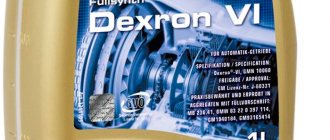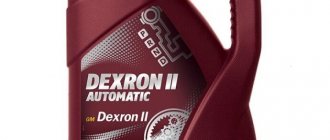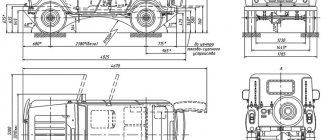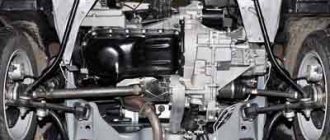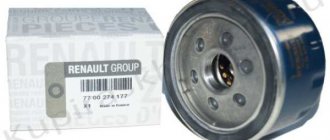Hydraulic power steering is designed to make steering easier, as well as dampen vibrations and shocks that occur on the steering wheel. In order for it to last a long time and work stably, it is necessary to regularly change the oil in it and monitor its quality. The article discusses Dextron oils, including Dextron 3 for power steering, and gives their description, advantages and disadvantages.
Description of the liquid
The power steering design consists of several mechanisms, which are visible in the diagram.
Power steering diagram for cars
The entire mechanism is washed by a special hydraulic fluid (PSF).
It has the following functions:
- transmits pressure from the pump to the piston;
- has a lubricating effect;
- has anti-corrosion properties;
- cools the components and mechanisms of the unit.
Thanks to the power steering oil, which circulates in a closed circuit, the created pressure is transferred from the pump to other components of the unit. When high pressure is created in the pump, PSF enters the low pressure zone where the SGC pistons are located. The cylinder is connected to the steering wheel rack using a spool. Depending on the position of the steering wheel, the spool directs oil, making it easier to turn the steering wheel.
An important function of PSF is to remove excess heat from mechanisms. In addition, acting as a lubricant, it reduces friction between moving components. Anti-corrosion additives in the composition prevent rust from forming inside the mechanism.
Compound
PSFs are divided into three types:
- mineral;
- semi-synthetic;
- synthetic.
Mineral ones contain 97% naphthenes and paraffins, the rest are additives that impart certain properties. Semi-synthetics contain both mineral and synthetic components. They have a longer service life and better performance. Synthetic PSF contains polyesters, hydrocracked petroleum fractions, and polyhydric alcohols. In addition, they contain additives that improve its properties.
PSF contains the following additives:
- to reduce friction between parts;
- against corrosion processes;
- viscosity stabilizing;
- acidity stabilizing;
- giving color;
- preventing foaming;
- to protect rubber parts.
When choosing power steering oil, you should pay attention to the composition and technical characteristics (video author - Vladislav Chikov).
Advantages and disadvantages
Each type of working fluid has its own advantages and disadvantages:
| Type PSF | Advantages | Flaws |
| Mineral |
| |
| Semi-synthetic |
| |
| Synthetic |
|
Dextron red
Interchangeability and miscibility
The manufacturer introduced the qualification of power steering fluids by color by adding coloring pigments to their composition: red, yellow and green. Red power steering oils are developed according to General Motors standards; they are called Dextrons.
Operating conditions for Dextron transmission fluids
The service life of ATF Dexron depends not only on the mileage, but also on the operating conditions of the machine:
- with aggressive driving, frequent slipping, driving on broken roads, ATF Dexron II and III wear out quickly;
- starting without warming up the automatic transmission oil in winter leads to rapid aging of Dexron 2 and 3;
- due to underfilling of fluid in the box, the pressure drops, the performance properties of the automatic transmission oil are reduced;
- the overflow of ATP causes the emulsion to foam. The excess splashes out, and the automatic transmission becomes underfilled with fluid;
- Constant overheating of the oil above 90℃ leads to loss of performance.
Manufacturers select ATP based on viscosity, load tolerance, friction properties, etc. for reliable operation of the waterworks. The marking for the recommended oil type, for example ATF Dexron II G or ATF Dexron III H, is indicated on the design:
- on automatic transmission oil dipsticks;
- on the plate under the hood;
- on the label of the power steering reservoirs.
The manufacturer's recommendations must be followed. This is what will happen if you ignore the instructions:
- Gears in the automatic transmission will shift with a delay. In newly filled liquid, frictional friction parameters may be underestimated or overestimated. The discs will slip at a different speed. Hence the increased consumption of ATF Dexron and wear of the clutches
- Loss of smoothness of gear shifting in automatic transmission. Changing the proportion and composition of additives leads to improper operation of the oil pump. Pressure will be supplied to the automatic transmission mechanisms with a delay.
- Pouring synthetic ATP Dextron into the power steering instead of the recommended mineral one will lead to wear of the rubber seals. In power steering with synthetic oil, the rubber composition differs in the presence of silicone and other additives.
The difference between Dexron 2E (IIE) and 2D (IID)
Most of the world's manufacturers of ATF and automatic transmission oils are guided by the General Motors fluid quality specification. Since the eighties, GM's current standard has been Dextron IID, which was later updated to Dexron IIE. And already in 1993, the standardization of Dextron No. 3 entered the market.
The differences between Dexron IIE and Dexron IID are minor. However, the new generation of Dextron number 3 standards differs significantly from its predecessors. The fractional characteristics of the third generation mixture have significantly improved, the manifestation of which affects all operating modes of the automatic transmission.
All generations of Dextron specifications are considered interchangeable. However, it is possible to update the gear oil only to a new generation; the opposite actions will worsen the performance of the additives that are added to Dexron 3 mixtures.
You should not replace Dexron 2 with Dexron 3 in cases where the manufacturer of the corresponding transmission does not declare an increase in efficiency when moving to new standards.
Is it possible to mix transmission fluids of different compositions?
When mixing Dexron mineral and synthetic gear oils, a chemical reaction will occur which may cause impurities to precipitate. The working properties of the liquid will deteriorate, which will harm the machine components.
Mixing different Dexron ATF standards with the same base results in unpredictable additive reactions. In this case, it is permissible to add fluid to an automatic transmission of a later standard, i.e. if ATP Dextron 2 is filled in, you can use ATP Dextron 3. On the contrary, it is not possible due to the insufficient effectiveness of the modifiers.
If the equipment does not allow a decrease in the oil friction coefficient due to an increase in additives, then ATP Dextron 2 cannot be replaced with Dextron 3.
It is also worth considering the climatic region of residence. ATF Dexron II D is not designed for cold winters, therefore it is only suitable for the southern part of Russia and Europe. When moving to the northern regions, the automatic transmission fluid must be completely replaced with ATF Dexron II E or ATF Dexron 3.
Red, yellow and green fluids are poured into the power steering. Only yellow oil with the same base can be mixed with red ATF in the power steering. For example, red mineral water Ravenol ATF Dexron DII art. 1213102 and yellow mineral water Febi art. 02615.
Popular brands specifications
Mannol Dexron 3
Mannol Dexron 3 automatic is considered a multi-purpose oil for automatic transmissions. This Manol mixture is also used in power steering, hydraulic clutches, and spinning mechanisms.
Just like all, without exception, Dextron oils have a reddish tone. The manufacturer has worked hard on the combination of additives and synthetic components, the components of which help improve the fractional characteristics at the time of gear shifting.
Oil from a manufacturer in Germany has high low-temperature characteristics, excellent antioxidant properties, and stable chemical composition throughout the entire period of operation. It is not advisable to use copper elements as a lubricant; the liquid is absolutely neutral to all other alloys and materials.
The products have all possible tolerances:
- ZF-TE-ML 09/11/14, ALLISON C4/TES 389, GM DEXR. III H/G/F, FORD M2C138-CJ/M2C166-H and others.
Castrol DEXRON
Castrol DEXRON is a low-viscosity mixture for automatic transmissions and is designed for use in modern gearboxes. It has proven itself to be the mixture with the greatest fuel economy.
Castrol production is established in Germany. The oil consists of high-quality base mixtures with an optimal set of additives. Has positive feedback from GM and Ford management, exceeds the requirements of the Japanese JASA 1A specification. In cases where it is not possible to purchase Dextron ATF for the Japanese, you can safely use oil from Castrol - Dexron 6.
Generations of Dexron liquids and their characteristics
To understand what are the differences between Dexron II and Dexron III, as well as what is the difference in one and the other transmission fluid, it is necessary to briefly look at the history of their creation, as well as the characteristics that have changed from generation to generation.
Dexron II characteristics
This transmission fluid was first released by General Motors in 1973. Its first generation was called Dexron 2 or II C. It was based on mineral oil from the second group according to the API classification - American Petroleum Institute. In accordance with this standard, the base oils of the second group were obtained by using hydrocracking. In addition, they contain at least 90% saturated hydrocarbons, less than 0.03% sulfur, and also have a viscosity index ranging from 80 to 120.
Viscosity index is a relative value that characterizes the degree of change in oil viscosity depending on temperature in degrees Celsius, and also determines the flatness of the kinematic viscosity curve versus ambient temperature.
The first additives that began to be added to transmission fluid were corrosion inhibitors. In accordance with the license and designation (Dexron IIC), the composition on the packaging is designated starting with the letter C, for example, C-20109. The manufacturer indicated that it is necessary to change the fluid to a new one every 80 thousand kilometers. However, in practice it turned out that corrosion occurs much faster, so General Motors began producing the next generation of its products.
So, in 1975, transmission fluid Dexron-II (D) . It was made on the same base mineral oil of the second group , but with an improved complex of anti-corrosion additives, in particular, preventing corrosion of the joints of oil coolers of automatic transmissions. This liquid had a fairly high minimum permissible operating temperature - only -15°C. But since the viscosity remained at a fairly high level, due to the improvement of transmission systems, this began to lead to vibrations when driving some models of new cars.
Beginning in 1988, automakers began replacing automatic transmissions with hydraulic control systems with electronic ones. Accordingly, they needed a different lubricant for automatic transmissions, one with low viscosity, which provides a much higher rate of force transmission (response) due to better fluidity.
In 1990, Dexron-II (E) (the specification was revised in August 1992, re-release began in 1993). His base was the same - the second API group. However, due to the use of a more modern additive package, gear oil is now considered synthetic! The lowest temperature for this liquid was reduced and became -30°C. Improved performance is the key to smooth automatic transmission gear shifting and increased service life. The license designation begins with the letter E, for example E-20001.
Dexron III characteristics
For Dextron 3 transmission fluids, the base oils belong to group 2+ , which is characterized by increased class 2 characteristics; in particular, the hydrotreating method is used in production. The viscosity index here is increased , and its minimum value ranges from 110...115 units and above . That is, Dexron 3 has a completely synthetic base .
The first generation was Dexron-III (F) . In fact, this is just an improved version of Dexron-II (E) with the same temperature ratings of -30°C. The disadvantages include low durability and poor shear stability, and fluid oxidation. This composition is designated with the letter F at the beginning, for example, F-30001.
The second generation - Dexron-III (G) , appeared in 1998. The improved composition of this fluid has completely overcome the problems of vibration when the car is moving. The manufacturer also recommended it for use in hydraulic power steering (power steering), some hydraulic systems, as well as in rotary air compressors where a high level of fluidity at low temperatures is required.
The minimum operating temperature at which Dextron 3 liquid can be used has become -40°C . This composition began to be designated with the letter G, for example, G-30001.
Third generation - Dexron III (H) . It was released in 2003. This fluid has a synthetic base and an even more improved additive package. Thus, the manufacturer claims that it can be used as a universal lubricant for all automatic transmissions with and without a controlled torque converter lock-up clutch, that is, the so-called GKÜB for gear shift lock-up. It has a very low viscosity in cold weather, so it can be used down to -40°C.
Operating conditions for Dexron 3
Historically, you should not rely on the tolerances of mixtures from manufacturing companies. All reputable car enthusiasts recommend paying attention to the specifications from the GM concern and the standards from automatic transmission manufacturers.
The main preconditions that you can focus on are the designations of the “transmission” on the automatic transmission dipstick. If so, it is preferable to fill it. Otherwise, the consequences could be dire.
Our advice: Follow the recommendations of the automatic transmission manufacturers of your car, follow the standards from General Motors, fill in the acceptable transmission mixture, and replace it in a timely manner. And your transmission will serve you long and reliably.
Color classification
It is wrong to be guided only by color gradation when choosing oil, although this practice is widespread among car owners. It is also often indicated what color liquids can be mixed and which ones should not be mixed.
Mixing is contraindicated with liquids based on composition and not color, and since now both mineral water and synthetics can be presented in any color, you should treat this information very carefully.
Red ATF gear oil is usually synthetic, the Dexron brand from General Motors is considered the standard, but there are products from other manufacturers, such as Revenol, Motul, Shell, Zic, etc.
Yellow oil, produced by the Daimler concern and under its license, is used in Mercedes-Benz hydraulic boosters. It can be synthetic and mineral.
Green oil. For the most part, multifunctional and universal liquids can be either synthetic or mineral in composition. They are used in power steering, suspension and other systems that operate on liquids. It cannot be mixed with other colors, except in cases where the manufacturer declares full compatibility, for example Comma PSF MVCHF is compatible with some types of Dexron.
Interesting video
What kind of fluid should I put in the power steering Dexron III ATF Multi HF? This question worries many beginners, as well as quite experienced drivers! The thing is that, as such, specialized fluids for power steering are very difficult to find on the automotive market, so according to advice from forums or friends, pour the following into the power steering fluid reservoir:
- Dexron (II - VI), the same as ATP liquid, only a different set of additives;
- PSF (I - IV);
- regular ATF, as in an automatic transmission;
- Multi HF.
As part of this article, I will give you a rating of the best power steering fluids 2022 - 2022 according to drivers, and you yourself will be able to choose the highest quality product for yourself at the best price.
How to top up
The process of topping up is simple - you need to unscrew the cap of the power steering expansion tank and add enough fluid so that it is between the MIN and MAX marks.
The main problem when adding power steering oil is its choice. It’s good if the replacement has not yet been made, and the system contains fluid from the manufacturer’s factory. In this case, it is enough to check the technical documentation, take the recommended oil and add to the required amount.
» alt=»»> If you don’t know what’s in the system, we recommend replacing it right away, because in any case you’ll have to buy a canister of liquid to top it up.
Source
Rating of power steering fluids 2022 - 2022 in tables
Automatic transmission oils (ATF), when filled into the power steering, have the same functions as power steering fluids, the function of increasing the static friction of the clutches (depending on the material of the clutches) and the function of reducing friction wear.
Rating of ATF fluids for power steering 2022 – 2019
| 1 | Formula Shell Multi-Vehicle ATF | from 360 rub. |
| 2 | Motul Multi ATF | from 800 rub. |
| 3 | ZIC ATF III | from 400 rub. |
| 4 | Mobil ATF 320 Premium | from 400 rub. |
| 5 | Liqui Moly Top Tec ATF 1100 | from 350 rub. |
The best power steering fluids (PSF)
If you intend to fill the power steering with PSF fluid, then you will need to consider the following: the fluid acts as a working fluid that transmits pressure from the pump to the piston, a lubricating function, an anti-corrosion function, and heat transfer to cool the system.
| Place | Name/Price | |
| 1 | RAVENOL Hydraulik PSF Fluid | from 1100 rub. |
| 2 | Pentosin CHF 11S | from 800 rub. |
| 3 | Motul Multi HF | from 600 rub. |
| 4 | Comma PSF MVCHF | from 500 rub. |
| 5 | LIQUI MOLY Zentralhydraulik-Oil | from 1000 RUR |
The best power steering fluids Dextron
The Dexron family was originally developed for use as hydraulic oils in automatic transmissions. Therefore, sometimes these oils are called transmission oils, which creates confusion, since transmission oils used to mean thick oils of the GL-5, GL-4, TAD-17, TAP-15 brands for gearboxes and rear axles with hypoid gears. Hydraulic oils are much thinner than transmission oils. It's better to call them ATPs. ATF stands for Automatic Transmission Fluid (literally - Fluid for automatic transmissions - i.e. automatic transmissions)
| 1 | Mannol Dexron III Automatic Plus | from 550 rub. |
| 2 | ENEOS Dexron ATF III | from 450 rub. |
| 3 | Castrol Transmax DEX-VI | from 220 rub. |
| 4 | Motul DEXRON III | from 600 rub. |
| 5 | Febi 32600 DEXRON VI | from. 400 rub. |
Release forms and articles
Synthetic-based ATP is made from hydrocracked petroleum fractions. The composition also contains polyesters, alcohols, additives that guarantee stability at operating temperatures, a dense oil film and long service life.
Read
Scope and composition of ZIC ATF 3 gear oil
Semi-synthetic fluids contain a mixture of synthetic and mineral oils. They are characterized by good fluidity, anti-foaming and heat dissipation.
Mineral oils consist of 90% petroleum fractions, 10% additives. These fluids are inexpensive, but their service life is short.
The most common Dextrons with release forms and articles:
- Motul ATF Dexron 3:
- 1 l, art. 105776;
- 2 l, art. 100318;
- 5 l, art. 106468;
- 20 l, art. 103993;
- 60 l, art. 100320;
- 208 l, art. 100322.
- Mobil ATF 320, semi-synthetic:
- 1 l, art. 152646;
- 20 l, art. 146409;
- 208 l, art. 146408.
- ZIC ATF 3, synthetic:
- 1 l, art. 132632.
- Liqui Moly ATF Dexron II D, mineral:
- 20 l, art. 4424;
- 205 l, art. 4430.
- Febi ATF Dexron II D, synthetic:
- 1 l, art. 08971.
Dextron can be of any of three types in composition. Volumes up to 5 liters are available in plastic cans or bottles. 200 l are supplied in metal barrels.
What is better for power steering: mineral oils or synthetics
The long-standing debate about which is better - synthetic or mineral water for the power steering system is not appropriate. The fact is that in the power steering there are a lot of rubber parts like nowhere else. Synthetic oils have a worse effect on the life of rubber parts based on natural rubber (almost all types of rubber), due to their chemical aggressiveness. In order to fill synthetic oils into the power steering system, its rubber parts must be designed for synthetic oils and have a special composition.
«>
What kind of oil is poured into the power steering?
The choice of oil for power steering should first of all be carried out in accordance with the recommendations of the vehicle manufacturer. If there is no opportunity or desire to follow the instructions, then ATF in the middle price category can be a universal option.
However, there is a small nuance here. Synthetics or semi-synthetics will cost more than mineral water, however, they have more stable viscosity values. This is especially important if the car is operated at low temperatures. Oil that is thinner in cold weather will ensure minimal wear on the pump when the power steering is operating on a cold vehicle, which ultimately minimizes the likelihood of its failure. Therefore, many drivers, despite the price, prefer to fill the power steering with a more expensive synthetic type of oil.
In turn, experts recommend taking into account the following factors when choosing the optimal power steering fluid:
- Hydraulic oil must withstand not only low, but also high temperatures, since in summer it can heat up to +100 °C and higher.
- The liquid must have high fluidity, otherwise the pump will be subject to excessive loads, which will lead to premature wear and failure.
Among other things, the oil must have a good working life, since it is usually replaced no more than once every 2-3 years or after 70-90 thousand kilometers.
Is it possible to mix oils?
During the operation of the vehicle, a variety of situations may arise that require urgent addition of fluid to the power steering. In such cases, many motorists ask a completely logical question: is it possible to mix oils? Professional service stations strongly advise against engaging in such experiments; however, car manufacturers themselves allow the possibility of mixing PSF, albeit with minor restrictions.
- The main rule that must be observed when resolving this issue is that in no case should mineral and synthetic compounds be poured into the hydraulic boosting system at the same time, since they have bases that are incompatible with each other.
- Red and yellow liquids can be mixed, since their chemical composition is largely similar to each other. The main thing is that the additives contained in the oil do not react with other substances and do not form unwanted compounds.
- Green oils should not be mixed with other liquids, as they contain synthetic and mineral components.
Is it possible to fill the power steering with engine oil?
In an attempt to save money, some vehicle owners, instead of using special PSF compounds intended for filling into power steering, prefer to use the remaining engine oil they have. In fact, this is only allowed if there is no other way out and the driver plans to correct the situation as soon as possible.
It is not worth using compounds that were developed for the engine for power steering, because these fluids perform different functions. Thus, power steering fluid must successfully cope with the following tasks:
- Lubrication of all components and mechanisms of the hydraulic booster system;
- Protection of power steering parts and components from corrosion and premature wear;
- Prevents excessive foaming;
- Cooling the amplification system in the hot season.
Obviously, engine oil performs slightly different functions, therefore, it would be a stretch to call these fluids interchangeable. At the same time, the base of motor oil, automatic transmission fluids and power steering compounds are no different from each other. They also contain similar additives aimed at reducing friction between metal, rubber and fluoroplastic parts. Therefore, if necessary, you can still fill the power steering with another fluid. But here everything is not so simple. For example, Europeans use exclusively special PSF, while the Japanese see nothing wrong with pouring ATF oil not only into the hydraulic booster, but also into the automatic transmission.
How much oil is in power steering
When completely replacing the fluid, the hydraulic booster system of a passenger car includes about 1 liter, while for trucks it will require 3-4 liters. When purchasing a composition, you must be guided by the volume specified by the machine manufacturer, purchasing technical fluids with a small reserve in case of emergency topping up.
How to check the level
It is noteworthy that not all drivers know where to look for the power steering reservoir. There is practically nothing complicated here, since it is usually located directly on the power steering pump housing, in the engine department. A low oil level in the power steering can lead to problems in the system, which will immediately appear on the dashboard. To check the fluid level, the car must be placed on a level, horizontal check. In general, there are two main ways to obtain the information you need:
- According to the marks applied to the walls of the power steering reservoir;
- According to the marks on the dipstick, which is built into the expansion tank.
On most modern cars and trucks, the following marks are applied to the power steering reservoir:
- Hot min and Hot max - allow you to control the minimum and maximum level of hot oil;
- Cold min and Cold max - show the minimum and maximum value of the cold liquid level.
Accordingly, when the engine is warm, you should look at the hot marks, and when the engine is cold, look at the cold marks. The best option would be to have the power steering fluid somewhere in the middle between min and max. If, even under one of the engine conditions (cold or warm), the level indicators are below or above the permissible values, it means that there is a malfunction of the power steering pump. For example, the causes of liquid leakage can be: depressurization of the system, mechanical damage to the tank or a malfunction of the valve on its lid, clogged filters, etc.
When checking the oil level in the power steering, it is worth spending a few minutes of your time to study the quality of the fluid. To do this, use a dipstick to take a small amount of lubricant and apply it to a clean sheet of white paper. The transparent composition and persistent color indicate that there is no cause for concern. But, if the oil is cloudy, foreign impurities are clearly visible in it, it should be replaced as quickly as possible, otherwise the power steering system may fail in the very near future. Sediment at the bottom of the expansion tank indicates that the additives have ceased to cope with the functions assigned to them and have begun to disintegrate into their constituent components.
What are power steering fluids?
Power steering fluid is a mineral or synthetic base with an additive package. In addition to the lubricating, protective, anti-corrosion and other functions inherent in most oils, power steering fluid additionally acts as an energy carrier.
The power steering operates on the principle of volumetric hydraulic drive. The power steering pump creates pressure and supplies it to a distributor installed at the base of the rack. Depending on which direction the driver turns the steering wheel, the fluid enters one of the two cavities of the rack and puts pressure on the piston, pushing it in the desired direction. Due to this, the force required to turn the wheels is reduced.
ATF fluid performs similar functions in an automatic transmission. All automatic transmission actuators operate from fluid pressure. The valve body directs the pressure of the ATF fluid to the desired circuit, due to which the clutch packs close and open and the brake bands are activated. At the same time, transmission oil used in conventional manual transmissions and other components that do not operate under pressure is inherently poorly suited for energy transfer.
Therefore, it is transmission oil for automatic transmissions that is used today in the hydraulic boosters of many modern cars. For example, the Japanese auto industry uses the same oil in the power steering of its cars that is poured into the automatic transmission. Conventional transmission oils for manual transmissions, drive axles, transfer cases of the GL-x category according to API or TM-x according to GOST are not suitable for power steering.



